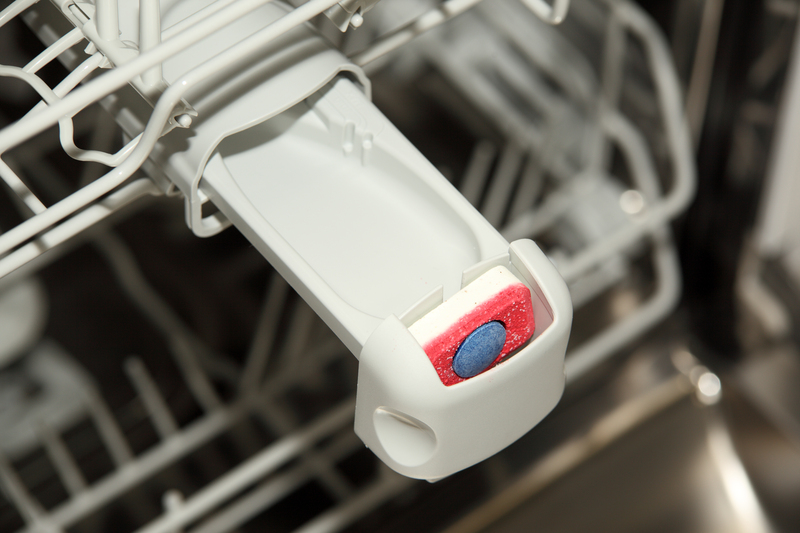Squeaky Clean Enamel Trays: The Simple Guide to Eliminating Grease
Posted on 16/09/2025
Squeaky Clean Enamel Trays: The Simple Guide to Eliminating Grease
Enamel trays are a staple in every kitchen, cherished for their non-stick qualities, durability, and classic aesthetic. But whether you use them for roasting vegetables, baking cookies, or serving hearty meals, grease buildup can turn your prized tray into a sticky mess. If you're tired of struggling to restore your enamel trays to their former glory, you're in the right place. In this comprehensive guide, we'll reveal easy, proven techniques to keep your enamel trays squeaky clean and looking brand new. Let's dive into the best methods for eliminating stubborn grease, discover kitchen-friendly cleaning tools, and learn how regular care can extend the life of your enamel bakeware.
Why Grease Clings to Enamel Trays
Enamel-coated trays combine the toughness of metal with a smooth, often non-stick layer. While this makes them ideal for high-temperature cooking and easy serving, it also means repeated use leads to the build-up of oil residues and baked-on food particles. Over time, these can form a persistent layer that resists casual rinsing.
Understanding why grease sticks is the first step toward the right solution. When exposed to oven heat, oils can polymerize--forming a l sticky, tough film--especially if trays are not cleaned promptly or properly after each use. Regular cleaning prevents buildup, but even the toughest stains can be tackled with the right approaches.

Essential Supplies for Grease-Free Enamel Trays
Before starting, gather the following items to ensure the cleaning process goes smoothly:
- Mild dish soap (preferably eco-friendly)
- Baking soda
- White vinegar
- Lemon juice
- A soft sponge or non-abrasive scrubber
- Plastic or wooden spatula (never metal)
- Microfiber cloth
- Hot water
- Rubber gloves (to protect your hands)
Having these ingredients on hand not only ensures a thorough enamel bakeware cleaning but also protects your trays from scratches and discoloration.
Step-by-Step Guide: How to Clean Greasy Enamel Trays
1. Basic Daily Cleaning
For daily care, try these simple steps to maintain squeaky clean enamel trays after each use:
- Let the tray cool. Plunging a hot tray in cold water can cause cracking or warping.
- Remove loose food debris. Use a plastic spatula to gently loosen stuck-on pieces.
- Soak in hot soapy water. Fill your sink or a basin with hot water and a splash of mild dish soap. Leave the tray to soak for 15-30 minutes.
- Scrub carefully. With a non-abrasive sponge, gently wipe down all surfaces. Avoid steel wool or harsh scourers, as these can damage the enamel coating.
- Rinse thoroughly and dry. Remove soap residue with clean water, then towel dry or air dry completely.
2. Tackling Stubborn Grease with Baking Soda
If regular cleaning doesn't remove all the grease, baking soda comes to the rescue. This natural cleaning hero works wonders for grease removal from enamel trays:
- Create a paste. Mix baking soda with a little water to form a thick paste.
- Apply generously. Spread the mixture over greasy or stained areas.
- Let it sit. Allow the paste to sit for 30 minutes or longer for stubborn spots.
- Scrub gently. Use a soft sponge to rub the paste in circles, lifting the grease without scratching the bakeware.
- Rinse and repeat if needed. Wash away residue with warm water, examine the tray, and repeat the process for any lingering grease.
3. Use Vinegar to Dissolve Tough Build-Up
White vinegar is acidic and excellent for breaking down grease. Here's a simple method:
- Mix a solution. Combine equal parts distilled white vinegar and hot water.
- Soak the tray. Pour the mixture into the tray or let the tray sit in a shallow container of this solution for 30 minutes.
- Wipe clean. The vinegar will loosen baked-on grease, making it easy to wipe away with a sponge or microfiber cloth.
- Rinse thoroughly. Discard the solution, then rinse the tray with clean water to remove all vinegar residue.
4. Lemon Power for Squeaky Clean Shine
Lemon juice not only cuts through grease but also removes odors and leaves a fresh scent on your enamel trays. Here's how to use it:
- Sprinkle baking soda. Coat greasy areas with a layer of baking soda.
- Apply lemon juice. Squeeze half a lemon over the tray, creating a fizzing reaction that lifts grime.
- Scrub and let stand. Work the mixture into the tray with a sponge, then let it sit for 10-15 minutes.
- Rinse, dry, and enjoy the shine!
5. The Oven Self-Clean Method (With Caution!)
Some ovens feature a self-cleaning setting that incinerates food residues on racks and trays. However, be cautious with premium enamel trays--only use this method if the manufacturer states it's safe. When in doubt, stick with the manual cleaning options above.
Preventative Care: Keeping Your Enamel Trays Grease-Free
Eliminating grease is much easier when it doesn't get the chance to build up in the first place! Here are expert tips for enamel tray maintenance that every home cook should know:
- Always grease sparingly. Use non-stick spray, oil, or parchment paper to minimize direct exposure between food and the tray.
- Clean promptly after use. Even if it means soaking overnight, never let greasy residue sit for days.
- Avoid extreme temperature changes. Never put a hot enamel tray under cold water--the thermal shock can crack the surface and invite grease penetration.
- Store trays dry and uncovered. Damp storage encourages musty odors and weakens enamel over time.
- Resist using metal utensils. Opt for plastic, silicone, or wooden tools to avoid scratching the non-stick coating.
Common Mistakes to Avoid When Cleaning Enamel Trays
Avoiding damage is just as important as eliminating grease. Here's what not to do, if you want your enamel trays to stay squeaky clean and last for years:
- Don't use steel wool or abrasive cleaners. These may strip off the enamel coating, making future grease harder to remove.
- Don't use oven cleaners or bleach. Harsh chemicals can discolor or weaken the enamel.
- Don't put trays in the dishwasher unless the manufacturer specifically approves. High-pressure jets and detergents may cause chipping or fading.
- Don't store food in the tray. Acidic foods, in particular, can interact with the enamel and cause stains or odors.
Why Invest in Regularly Cleaned Enamel Trays?
A spotless enamel baking tray is more than just visually appealing--it ensures food safety, better flavor, and a longer life for your kitchenware. Here are some key benefits of maintaining grease-free enamel trays:
- Enhanced food flavor: Residual grease can cause cross-contamination, change food flavors, and even impart funky odors to your next meal.
- Healthier cooking: Grease buildup can harbor bacteria or burnt particles, affecting the quality of your food.
- Longer lifespan: Regular cleaning preserves the non-stick and rust-resistant qualities of your enamel trays.
- Even heating: Clean surfaces ensure even heat distribution and prevent funky burning or sticking.
Homemade Cleaners vs. Commercial Products
Many specialty cleaning products claim to deliver squeaky clean enamel trays, but most professional chefs and home cooks swear by household staples. Baking soda and vinegar are gentle, non-toxic, and eco-friendly choices that eliminate grease without harming the enamel. Commercial cleaners can be effective--if labeled safe for enamel--but often contain harsh agents. Always check instructions and test on a small spot first if you're unsure.
The Environmental Benefits of Proper Enamel Tray Care
Using natural cleaning solutions and extending the life of your enamel trays isn't just good for your kitchen--it's good for the planet. Fewer trays end up in landfills, and you avoid introducing harsh chemicals into your water supply.
Here's how your efforts help:
- Less waste: Keeps damaged or unsalvageable bakeware out of landfills.
- Eco cleaning: Natural agents like baking soda, lemon, and vinegar are biodegradable and safe for the environment.
- Resource efficiency: Well-maintained trays require fewer replacements, saving resources required for manufacturing new bakeware.

Frequently Asked Questions About Cleaning Enamel Trays
-
Q: Can you use steel wool on enamel trays?
A: No. Steel wool or other abrasive pads will scratch and damage the surface, making it more prone to future grease buildup. -
Q: Are commercial oven cleaners safe for all enamel bakeware?
A: Only use products specifically labeled as enamel-safe. When in doubt, opt for homemade cleaners. -
Q: How often should I deep clean my enamel trays?
A: Deep cleaning is recommended at least once a month or whenever you notice persistent stains or sticky spots. -
Q: What if my enamel tray has chipped?
A: Discontinue using severely chipped trays for food preparation, as the exposed metal beneath can rust and harbor bacteria.
Conclusion: Achieve Squeaky Clean Enamel Trays the Simple Way
A gleaming enamel tray is the mark of a thoughtful home cook and a welcoming kitchen. By choosing the right supplies, sticking to a regular cleaning schedule, and using gentle, effective methods, you'll eliminate grease from enamel bakeware with ease. From everyday maintenance to tackling the most stubborn stains, the techniques highlighted in this guide ensure your trays always look, feel, and perform their best.
So next time your enamel tray faces a greasy challenge, remember: squeaky clean is just a few simple steps away. Embrace these expert tips, and enjoy healthier, tastier meals with sparkling enamel bakeware!



